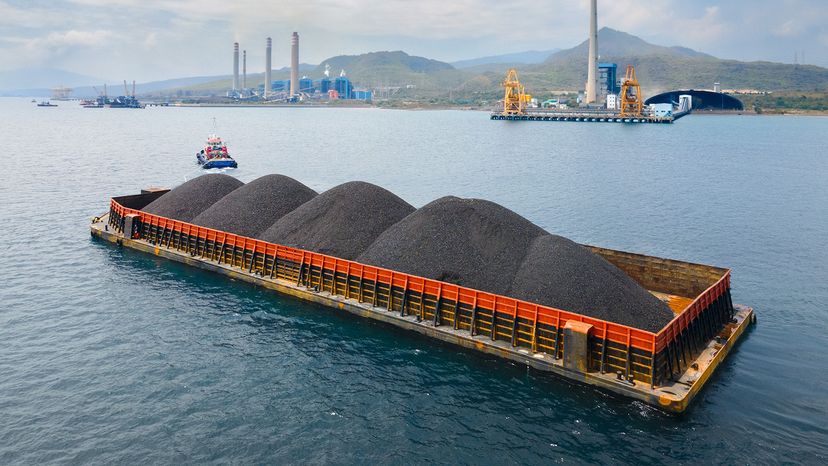“
When you’ve ever priced out cargo or examine a ship carrying coal, grain or bricks, you’ve seen tonnes vs. tons. These two phrases look comparable but consult with totally different programs and models. In worldwide commerce and technical writing, that small spelling shift adjustments real-world numbers.
Definition and Origin of the Metric Tonne
A tonne, additionally referred to as a metric ton or metric tonne, is a metric unit of mass equal to 1,000 kilograms (about 2,204 kilos).
The phrase “tonne” comes from French and the metric system, which most nations use for measuring weight and distance. Through the twentieth century, the metric system (together with the tonne) turned the usual for science, engineering, and worldwide commerce.
The Imperial Ton: Quick vs Lengthy
The phrase “ton” belongs to the Imperial system and U.S. customary system. In Imperial measurement you’ll encounter two widespread varieties:
- Quick ton (U.S. ton): 2,000 kilos (about 907 kilograms)
- Lengthy ton (British or imperial ton): 2,240 kilos (about 1,016 kilograms)
When a doc says “ton,” context issues. U.S. commerce reviews normally imply the brief ton, whereas older U.Okay. sources usually imply the British lengthy ton.
NIST’s Handbook 44 explains these definitions in its Items and Methods of Measurement appendices, and the UK’s Weights and Measures Act 1985 banned the usage of the Imperial ton for commerce, successfully mandating the metric tonne.
Fast Equivalents and Conversions
- 1 tonne (t) = 1,000 kg = about 2,204 lb
- 1 brief ton (U.S. ton) = 2,000 lb (907 kg)
- 1 lengthy ton (imperial ton) = 2,240 lb (1,016 kg)
To check shortly: 1 tonne is basically 1.102 brief tons or 0.984 lengthy tons.
The place Every Unit Is Used
“
Nearly all of nations use the tonne as a result of the metric system is normal in worldwide commerce. Canada measures export commodities in tonnes, although home contracts should still reference the U.S. ton. The U.Okay. makes use of the metric tonne in trendy commerce, with the lengthy ton showing in historic knowledge.
The USA generally makes use of the brief ton for home gross sales, but science, medication and lots of industries specify kilograms. In world commerce and floor logistics, stating kilograms alongside tons or tonnes helps events in numerous programs examine figures.
Tonnage, Capability and What ‘Ton’ Can Imply
Writers generally use ton to consult with capability relatively than mass. In transport, tonnage can imply quantity, corresponding to a register ton of 100 cubic ft, not weight. For instance, a ship’s gross tonnage is measured in register tons of 100 cubic ft every.
NIST notes this twin use in Handbook 44’s Basic Tables and Items. All the time verify whether or not a determine refers to mass or capability earlier than you calculate freight prices or limits for floor transport.
Fashion Notes: Spelling and Terminology
Use tonne for the metric system and ton for the imperial system. When it’s essential to use ton, write brief ton or lengthy ton to make clear.
According to “ton vs” and “ton and tonne” search habits, add the metric equal in kg for readability. This method reduces confusion in contracts, invoices and specs.
Labored Examples You Can Copy
“
- Coal cargo: A ship hundreds 50,000 tonnes of fabric. That equals 50 million kilograms and about 55,116 brief tons. The same manifest itemizing 50,000 brief tons equals 45,359,237 kilograms. Identical floor route, totally different unit, totally different mass.
- Bricks on a flatbed: A U.S. order requires 3 brief tons (2,722 kg) of bricks. A Canadian spec that reads 3 tonnes means 3,000 kilograms. The numbers look shut but usually are not equal.
- Evaluating models: 10 lengthy tons of metal bar equals 22,400 kilos (10,160 kg). In comparison with 10 tonnes, that long-ton order is heavier by about 160 kilograms.
Writing for Commerce and Engineering
When measuring weight for world commerce, at all times state the unit and, in parentheses, the equal in kilograms. Notice which programs your readers count on.
Within the USA, brief tons seem in commodity reviews, however worldwide contracts normally specify tonnes. Within the UK and Canada, tonnes are normal.
In specs, outline phrases the primary time you employ them so readers perceive what every unit means on the floor.
Fast Definitions
- Metric tonne (tonne): Metric unit equal to 1,000 kg
- Imperial ton: Both the lengthy ton (2,240 lb or 1,016 kg) or a generic reference to ton within the imperial system
- Quick ton (U.S. ton): 2,000 lb (907 kg)
- Lengthy ton (British ton): 2,240 lb (1,016 kg)
- Metric unit: A unit from the metric system, like kilogram, meter or liter
- Mass vs. weight: Mass is the quantity of matter; the power of gravity appearing on that mass. Many industries use “weight” after they actually imply mass.
- Means: In specs, “ton” means various things by nation or period, so at all times outline it the primary time
- Origin: Ton comes from “tun,” a big cask or barrel. Tonne entered English through French throughout metric adoption within the nineteenth century.
We created this text at the side of AI expertise, then made positive it was fact-checked and edited by a HowStuffWorks editor.
Cite This!
Please copy/paste the next textual content to correctly cite this HowStuffWorks.com article:
nntttt
`;return t.byline_authors_html&&(e+=`By: ${t.byline_authors_html}`),t.byline_authors_html&&t.byline_date_html&&(e+=” | “),t.byline_date_html&&(e+=t.byline_date_html),e+=`ntttt
nttttnntttt
${t.body_html.replaceAll(‘”pt’,`”pt${t.id}_`).replaceAll(“#pt”,`#pt${t.id}_`)}
nnttt
`}(n);this.loadedDiv.innerHTML+=r,doc.title=`${n.title} | HowStuffWorks`;const s=`content-loaded-${n.id}`,o=doc.getElementById(s);o.dataset.contentId=n.id;const l=o.querySelectorAll(“.lazyload”);HSW.utilities.lazyLoadElements(l),HSW.ux.editorial.init({twitter:!0,fb:!0,instagram:!0}),o.querySelectorAll(“.toc a”).forEach(t=>{t.addEventListener(“click on”,t=>{t.preventDefault();const e=t.goal.dataset.goal,i=doc.querySelector(`a[name=”${e}”]`);i?i.scrollIntoView({conduct:”auto”}):console.error(`Unable to find goal with title ${e}`)})});strive{if(userData.adsActive)if(HSW.utilities.isMobile()){o.querySelectorAll(“.ad-mobinline”).forEach(t=>{t.setAttribute(“id”,`ad-wrap-mobinline${a}`),t.childNodes[0].setAttribute(“id”,`ad-div-mobinline${a}`),void 0!==HSW.advertisements&&HSW.pq.add(()=>{HSW.advertisements.addNewUnits([`ad-div-mobinline${a}`])},”advertisements”),a+=1})}else{const t=doc.createElement(“div”);t.setAttribute(“id”,`ad-after-${e}`),t.classList.add(“ad-inline”,”mb-8″,”bg-gray”,”w-max-full”,”h-min-90″,”text-center”);const a=doc.createElement(“div”);a.setAttribute(“id”,`ad-div-inline${i}`),t.appendChild(a),o.after(t),void 0!==HSW.advertisements&&HSW.pq.add(()=>{HSW.advertisements.addNewUnits([`ad-div-inline${i}`])},”advertisements”)}}catch(t){console.error(t)}if(window.setupSinglePageUX(o),window.historical past.pushState)strive{window.historical past.pushState(null,`${n.title} | HowStuffWorks`,n.href)}catch(t){console.warn(t)}const c=[];n.taxonomy.forEach((t,e)=>{c[e]=t.title.toLowerCase()});const d=c.be a part of(“/”),h=[];n.authors.forEach((t,e)=>{h[e]=`${t.first_name.toLowerCase()} ${t.last_name.toLowerCase()}`});const g=h.be a part of(“,”);pageMetricsData.href=n.href,pageMetricsData.title=n.title,pageMetricsData.tax=d,pageMetricsData.aType=n.asset_type,pageMetricsData.cType=`${n.sort}-continuous`,pageMetricsData.template=n.template,pageMetricsData.supply=n.supply,pageMetricsData.sponsor=n.sponsor,pageMetricsData.creator=g,pageMetricsData.contentid=n.id,pageMetricsData.picture=n.hero_image,pageMetricsData.web page=0,pageMetricsData.pubDate=n.publish_date.slice(0,10),pageMetricsData.editDate=n.last_editorial_date.slice(0,10);const u=/[^da-z_]/i;let p=HSW.utilities.isMobile()?”hsw_lite”:”hsw”;n.taxonomy.slice(1,3).forEach(t=>{p+=`|${t.title.change(u,””).toLowerCase()}`}),pageMetricsData.adUnit=p,Alpine.retailer(“share”,{title:pageMetricsData.title,url:pageMetricsData.href,picture:pageMetricsData.picture}),perform(t,e){const i=t.href.break up(“.com/”).pop();dataLayer.push({occasion:”virtual-page-view”,virtualPageUrl:i,virtualPageTitle:doc.title,pageNbr:0}),dataLayer.push({occasion:”raw-event-interactive”,eventCategory:”page-interaction”,eventAction:”continuous-load”,eventLabel:”new-content”,eventValue:e+1,virtualPageUrl:t.href})}(n,this.gadgets.size);const m={…pageMetricsData};t.gadgets.push(m);const f=doc.getElementsByClassName(“new-content-loaded”);for(let e=0;e
